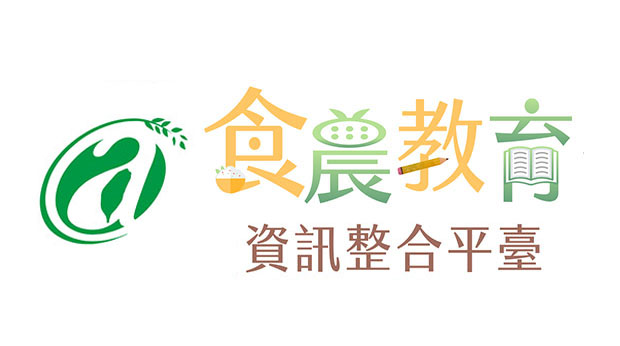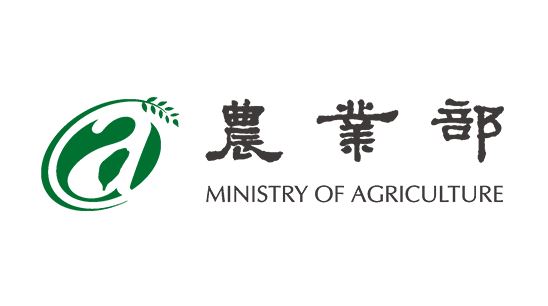淺談有益微生物提升番茄耐鹽性之可能性
番茄(Solanum lycopersicum L.)廣泛栽培於熱帶及亞熱帶地區,根據FAO統計資料庫,2021年全球番茄產量達189,133,955公噸,栽培面積達5,167,388公頃(FAOSTAT, 2023),2022年番茄在全世界的市場產值預估落於USD 1,817.4~2,035.5億美元之間(Data Bridge Market Research, 2023; Straits Research, 2023)。但番茄的生產正在面臨生物性及非生物性逆境的挑戰,其中土壤鹽害因為全球化的缺水趨勢已成為主要的非生物逆境因子,威脅到人類的糧食安全及番茄的周年生產。土壤鹽化不單只受到氣候變遷影響,也與灌溉有關。例如由於長期的乾旱,農地因缺水而灌溉不足,會導致原本來自灌溉水中的鹽類累積在土壤中。鹽逆境會加劇乾旱對多數植物生長的負面影響,有研究估計全球有超過9億公頃的土地受到高鹽含量的影響,其中20%為可耕地(FAO, 2021; 2022)。
一般而言,植物對鹽逆境有兩個階段的反應(Roșca et al., 2023):(1)在開始的數小時或數天內,與滲透壓相關的變化為主要反應,包含氣孔關閉、抑制地上部的細胞擴增等影響植物的整體發育。(2)第二階段會持續數天、數週,甚至數月,由於鹽在葉部的累積造成離子毒害影響植物生長,相關反應包含減緩代謝、早衰及最後的細胞凋亡。氯化鈉(NaCl)是鹽土及水中最常見的鹽類,其他還包含鈣、鎂和鈉的氯化物、硫酸鹽和碳酸鹽。當土壤的電導度(EC)超過4 dS/m (約40 mM NaCl)時,通常認為已受鹽影響,且會限制多種作物的產量。雖然這個數值被廣泛認同,但值得注意的是,美國土壤科學學會的技術委員會已將鹽土和非鹽土之間的界限修改為2 dS/m,敏感作物的產量在EC為2~4 dS/m的微鹽土可能受到影響(Abrol et al., 1988)。多篇研究顯示鹽害會對番茄各生育階段造成型態的改變,包含株高、根莖部比例、鮮重、乾重、葉面積、分枝數、每株葉片數與花朵數等(Roșca et al., 2023)。在產量方面,Liu et al. (2014)發現番茄品種‘臺南亞蔬19號’(Tainan ASVEG No. 19)、‘花蓮亞蔬21號’(Hualien ASVEG No. 21)及‘種苗亞蔬22號’(Taiwan Seed ASVEG No. 22)在經過以150 mM NaCl澆灌20天的處理後,其平均果重相較於對照組,分別降低26.03%、47.13%及55.56%,且總產量個別從每株243.9、78.7及155.5克下降至每株48.8、6.9及19.3克。
雖然目前已有鹽鹼土改良技術可幫助拓展可耕地面積,但該技術的推廣性受到成本考量的限制;育成耐鹽作物品種同樣也是可行且值得發展的方向(Guo et al., 2022),但眾所周知,育種過程相當耗費時間。相較於目前採行的物理化學方法學,利用促進植物生長細菌(plant growth-promoting bacteria,PGPB)來因應環境壓力,是一個成本合算且對環境友善的生物性策略(Gamalero and Glick, 2022)。目前有一些細菌分離株已知具有減緩鹽害的效果,在番茄上大部分發表的分離株多為綠膿桿菌屬(Pseudomonas spp.)且被證實可促進植物生長及改善鹽逆境(Tank and Saraf, 2010; Ali et al., 2014; Yan et al., 2014; Egamberdieva et al., 2017; Singh et al., 2018; Liu et al., 2021);另外也有一隻耐鹽的芽孢桿菌(Bacillus sp.)被認為有緩解小麥鹽逆境的潛力(Ibarra-Villarreal et al., 2021)。
參考文獻
Abrol, I.P., J.S.P. Yadav, and F.I. Massoud. 1988. Salt-Affected Soils and their Management. Soils Bulletin 39. FAO, Rome.
Ali, S., T.C. Charles, and B.R. Glick. 2014. Amelioration of high salinity stress damage by plant growth-promoting bacterial endophytes that contain ACC deaminase. Plant Physiology and Biochemistry 80: 160–167. doi: 10.1016/j.plaphy.2014.04.003.
Data Bridge Market Research analyses. 2023. https://www.databridgemarketresearch.com/press-release/global-tomatoes-market (Accessed November 23, 2023)
Egamberdieva, D., K. Davranov, S. Wirth, A. Hashem, and E.F. Abd_Allah. 2017. Impact of soil salinity on the plant-growth – promoting and biological control abilities of root associated bacteria. Saudi Journal of Biological Sciences 24(7): 1601–1608. doi: 10.1016/j.sjbs.2017.07.004.
FAO 2021. FAO soils portal. Global Map of Salt-affected Soils. Available at: https://www.fao.org/global-soil-partnership/areas-of-work/soil-salinity/en/ (Accessed November 23, 2023).
FAO 2022 Global soil partnership. soil salinity. Available at: https://www.fao.org/global-soil-partnership/areas-of-work/soil-salinity/en/ (Accessed November 23, 2023).
FAOSTAT. 2023. Crops and livestock products. Available at: https://www.fao.org/ faostat/en/#data/QCL (Accessed November 23, 2023)
Gamalero, E., and B.R. Glick. 2022. Recent Advances in Bacterial Amelioration of Plant Drought and Salt Stress. Biology 11(3): 437. doi: 10.3390/biology11030437.
Guo, M., X.-S. Wang, H.-D. Guo, S.-Y. Bai, A. Khan, et al. 2022. Tomato salt tolerance mechanisms and their potential applications for fighting salinity: A review. Front. Plant Sci. 13: 949541. doi: 10.3389/fpls.2022.949541.
Ibarra-Villarreal, A.L., A. Gándara-Ledezma, A.D. Godoy-Flores, A. Herrera-Sepúlveda, A.M. Díaz-Rodríguez, et al. 2021. Salt-tolerant Bacillus species as a promising strategy to mitigate the salinity stress in wheat (Triticum turgidum subsp. durum). Journal of Arid Environments 186: 104399. doi: 10.1016/j.jaridenv.2020.104399.
Liu, C.-H., W. Siew, Y.-T. Hung, Y.-T. Jiang, and C.-H. Huang. 2021. 1-Aminocyclopropane-1-carboxylate (ACC) Deaminase Gene in Pseudomonas azotoformans Is Associated with the Amelioration of Salinity Stress in Tomato. J. Agric. Food Chem. 69(3): 913–921. doi: 10.1021/acs.jafc.0c05628.
Liu, F.-Y., K.-T. Li, and W.-J. Yang. 2014. Differential responses to short-term salinity stress of heat-tolerant cherry tomato cultivars grown at high temperatures. Hortic. Environ. Biotechnol. 55(2): 79–90. doi: 10.1007/s13580-014-0127-1.
Roșca, M., G. Mihalache, and V. Stoleru. 2023. Tomato responses to salinity stress: From morphological traits to genetic changes. Front Plant Sci 14: 1118383. doi: 10.3389/fpls.2023.1118383.
Singh, V.K., A.K. Singh, P.P. Singh, and A. Kumar. 2018. Interaction of plant growth promoting bacteria with tomato under abiotic stress: A review. Agriculture, Ecosystems & Environment 267: 129–140. doi: 10.1016/j.agee.2018.08.020.
Straits Research. 2023. https://straitsresearch.com/report/tomato-market (Accessed November 23, 2023)
Tank, N., and M. Saraf. 2010. Salinity-resistant plant growth promoting rhizobacteria ameliorates sodium chloride stress on tomato plants. Journal of Plant Interactions 5(1): 51–58. doi: 10.1080/17429140903125848.
Yan, J., M.D. Smith, B.R. Glick, and Y. Liang. 2014. Effects of ACC deaminase containing rhizobacteria on plant growth and expression of Toc GTPases in tomato (Solanum lycopersicum) under salt stress. Botany 92(11): 775–781. doi: 10.1139/cjb-2014-0038.
知識樹分類
生產者知識庫 > 園藝類 > 果菜類
生產者知識庫 > 土壤肥料類 > 土壤微生物及土壤生物化學
- 苗栗區農情月刊第312期-114年12月主要作物病蟲害預測114/12/10
- 強化抗病與逆境適應力 臺南農改場打造設施瓜果施韌性栽培新典範114/11/15
- 「草莓產業技術擴散論壇」-展現南部草莓發展的潛力與實力114/10/08
- 抗青枯病番茄品系篩選初探.pdf114/10/07
- 苗栗區農情月刊第309期-114年9月主要作物病蟲害預測114/09/04
- 重金屬高富集植物在土壤重金屬污染整治與修復上之應用114/09/01
- 臺南區農業專訊第132期-「2025瓜果嘉年華智慧生產與優良品種交流會」114/08/21
- 應用DNA 分子標誌檢定番茄.pdf114/08/08
- 露地番茄之粉蝨防治基準初探114/07/23
- 臺南區農業改良場研究彙報第 85 號-設施甜椒小型害蟲管理案例之探討114/07/22






